Best Remote IoT Device Platforms for Modern Enterprises
With the advent of IoT devices, organizations have expanded their architecture to accommodate communication and management across the complete IoT network. However, it can be a tedious job to ensure that all the IoT nodes remain active and secure while guaranteeing optimal working. In such a scenario, remote IoT device management platforms stand as the effective choice for modern enterprises.
These platforms not only help manage, control, and secure all the IoT devices but equip you with the data to help make intelligent decisions for the improve of system’s performance and quality.
This article explores the concept of remote IoT device management in detail along with the features of eight popular platforms.
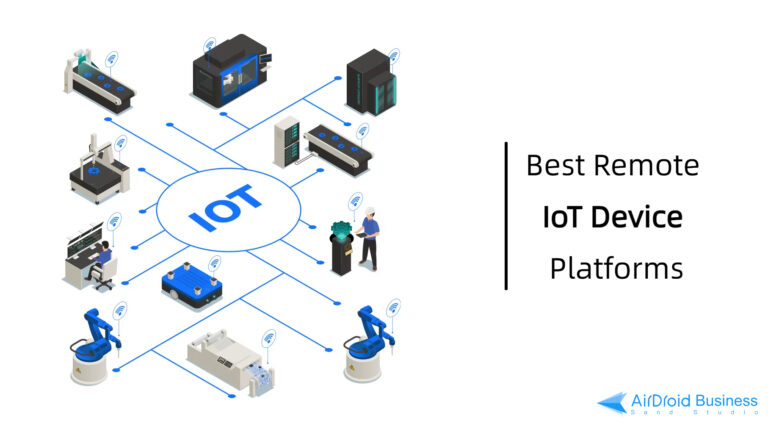
- Part 1 :Understanding IoT Device Platforms
- Part 2 :8 Top Free or Open Source Remote IoT Device Management Platforms
- Part 3 :Common Use Cases for Remote IoT Device Management Platforms
- Part 4 :Key Factors to Consider When Choose the Best Remote IoT Device Management Platform
- Part 5 :How to Use AirDroid Business for Remote IoT Device Management
Part 1: Understanding IoT Device Platforms
This section covers the details of what remote IoT device platforms are and how they work in alignment to help manage devices.
1What is Remote IoT?
Remote IoT enables the remote and secure control and management of IoT devices and Raspberry Pi. They are easier to set up and manage as there are no complex requirements like VPN setup. It plays a crucial role in device management as it allows the upload of any application across the devices from a centralized web dashboard.
The key benefits of Remote IoT are increased efficiency and reduced downtime. This is because it’s easier to manage devices from a single point and monitor their health remotely.
2What is an IoT Device Platform?
IoT platforms bring together all the tools and capabilities required to manage IoT devices in one place. These platforms can exist in the form of tools or services, combining the primary components of an IoT system like hardware, software, network, and user interface. There are four types of IoT platforms:
Connectivity Platform
These platforms are responsible for ensuring that the devices in the IoT network maintain their online state. They make use of Wi-Fi and existing carrier services to detect and communicate the device connectivity.
Device Management Platform
These platforms are responsible for all the functionalities related to the devices in your ecosystem. From firmware updates to reporting metrics and patch security to routine tasks of the devices, they handle it all.
Data Analytics Platform
These platforms are a great choice for data-driven IoT networks. They bring together the capabilities of AI, ML, and statistical analysis to gather and interpret data.
Application Development Platform
These platforms are a comprehensive solution that comes with the capability of handling all the components of an IoT ecosystem. From development to network configuration and hardware engineering, they handle it all for you.
3Features and Benefits of Remote IoT Device Management Platforms
- Improved efficiency of the ecosystem because of the automation of tasks and rapid response.
- Enhanced control because of the centralized management of devices.
- Better security controls because of the data encryption and real-time monitoring capabilities.
- Reduced costs because of the optimized resource utilization and decreased costs of support.
- Increased scalability because of the flexibility of the system to adapt to an increased number of devices.
Part 2: 8 Top Free or Open Source Remote IoT Device Management Platforms
This section covers the details of different IoT management platforms and how they help in remote IoT management.
1Connectivity Platforms
These platforms help ensure the devices’ state remains online throughout the IoT network. Two of the popular connectivity platforms are Azure IoT Hub and Google Cloud IoT Core.
Azure IoT Hub
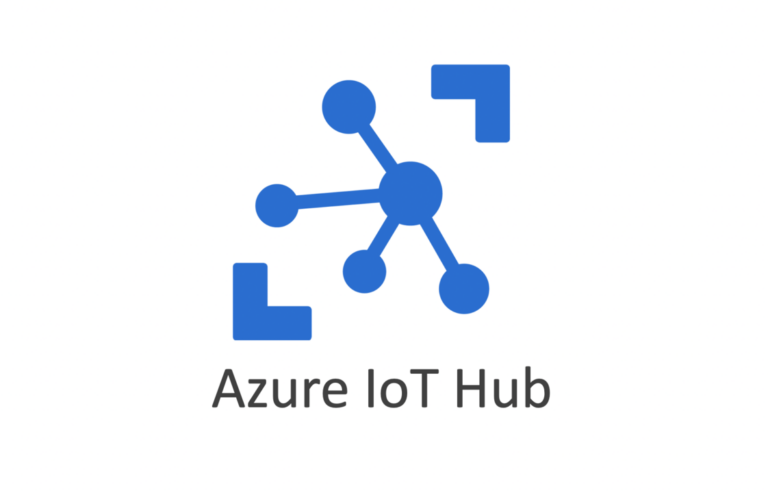
Azure IoT Hub allows the control and management of a wide range of devices functioning on multiple operating systems in the IoT ecosystem.
Specification | Description |
|---|---|
| Official Website | https://azure.microsoft.com/en-us/products/iot-hub |
| Supported Device Systems | ● Windows ● Linux distributions ● Real-time operating systems |
| Key Features | ● Per-device identity for enhanced security ● HTTP, AMPQ, and MQTT protocols ● Transmit data from multiple devices to the cloud ● Monitoring and diagnostics across all the connected devices ● Cloud-to-device messaging (Available in Standard pricing tier) |
| Open-source? | It is not open-source but offers a free standard version. |
| Pricing | It is not open-source but offers a free standard version. |
| G2 Score | 4.3/5.0 based on 44 reviews. |
Google Cloud IoT Core
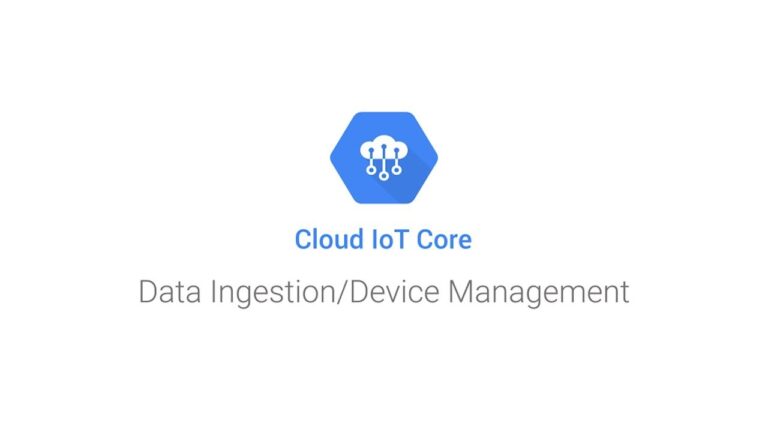
Google Cloud IoT Core has been a preferred choice by many companies when it comes to the management of the IoT ecosystem for a long time. However, the platform capabilities have now been discontinued starting August 16, 2023.
2Device Management Platforms
These platforms equip an organization with all the required capabilities for managing devices across the ecosystem. Two of the popular device management platforms for remote IoT management are AWS IoT Device Management and AirDroid Business.
AWS IoT Device Management
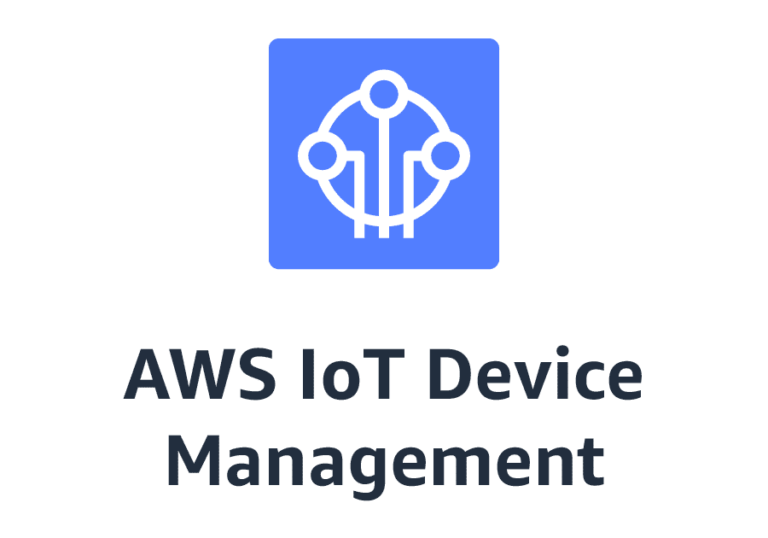
AWS IoT Device Management allows you to control, organize, and remotely manage IoT devices. All the devices that can be integrated with the AWS IoT Core can be managed by this tool.
Specification | Description |
|---|---|
| Official Website | https://aws.amazon.com/iot-device-management/ |
| Supported Device Systems | Can manage all device types and operating systems which can be registered via AWS IoT Core |
| Key Features | ● Register a fleet of devices in a few clicks ● Group the connected devices for an enhanced organization ● Collect device logs to monitor the system performance ● Bulk update the devices’ firmware and software remotely ● Secure connections with individual devices |
| Open-source? | It comes with various opensource libraries and developer guides |
| Pricing | It is free to get started with the AWS IoT Device Management. The platform charges you based on your usage. Study further details about it here. |
| G2 Score | 4.3/5.0 based on 12 reviews. |
AirDroid Business
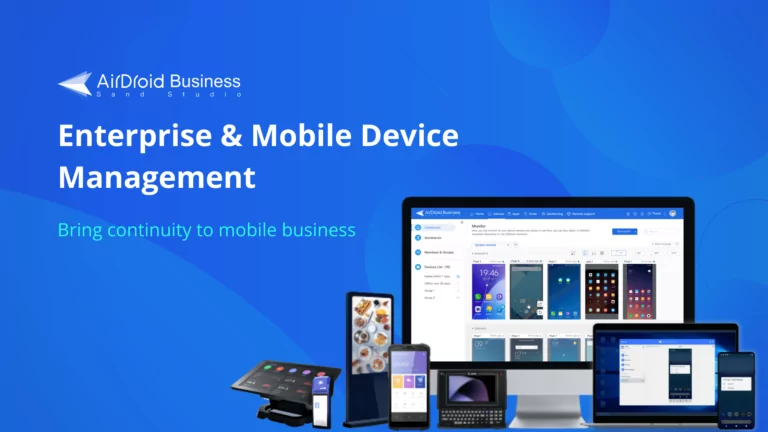
AirDroid Business is an extensive endpoint device management platform. It provides a wide range of capabilities to control and manage Windows and Android devices.
Specification | Description |
|---|---|
| Official Website | https://www.airdroid.com/business/ |
| Supported Device Systems | ● Android ● Windows |
| Key Features | ● Kiosk mode for an enhanced device control ● Remotely view and control all the devices ● Simplified device enrollment and configuration ● Bulk app management ● Remote wipe and data loss prevention features for increased security |
| Open-source? | It is not an open-source platform, but comes with a free trial. |
| Pricing | It comes with a free trial of 14 days. Afterward, the Basic plan costs $12/device/year. |
| G2 Score | 4.8/5.0 based on 182 reviews. |
3Data Analytics Platforms
These platforms are an optimal choice for IoT networks involving ingestion and analysis of data. They combine statistical analysis capabilities with AI and ML to help make data-driven decisions. Two of the popular data analytics platforms are ThingsBoard and Kaa IoT.
ThingsBoard
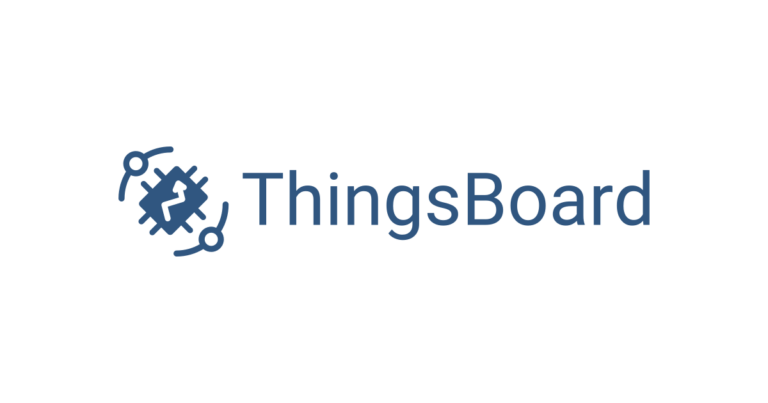
ThingsBoard is an open-source IoT platform that stands as the right choice for data-driven IoT ecosystems. It provides significant functionalities of data collection, processing, and visualization along with device management.
Specification | Description |
|---|---|
| Official Website | https://thingsboard.io/ |
| Supported Device Systems | It allows connection across a wide range of device platforms through the connectivity protocols of MQTT, HTTP, CoAP, and LwM2M. |
| Key Features | ● Allows the reliable collection of telemetry data ● Create widgets to visualize the data ● Processing of incoming data via flexible chain rules ● Register and manage devices with ease ● Supports MQTT and HTTP(s) protocols |
| Open-source? | Yes, it is an open-source IoT platform. |
| Pricing | The Maker plan costs $10/month which supports up to 30 devices. |
| G2 Score | 4.1/5.0 based on 5 reviews. |
Kaa IoT
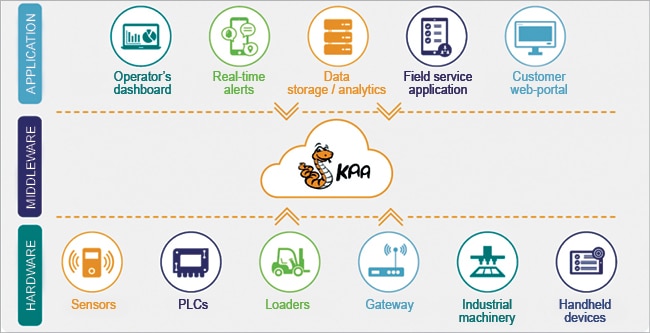
Kaa IoT is an open-source IoT platform that allows the collection, analysis, and visualization of data from connected devices. It retrieves the information in real-time which stands helpful for real-time systems.
Specification | Description |
|---|---|
| Official Website | https://www.kaaiot.com/ |
| Supported Device Systems | Supports a wide range of device platforms that can be connected through the LPWAN, Cellular, Wired, and Short-range connectivity technologies. |
| Key Features | ● Supports integrations of various hardware platforms like sensors, machines, gateways, and more ● Allows the registration and management of devices ● Reliably collects data and comes with built-in integration with popular databases like MongoDB and Influx DB ● Set up alerts and notifications using the tool of Rule Engin ● Supports numerous integrations like data analytics and REST APIs |
| Open-source? | Yes, it is an open-source IoT platform. |
| Pricing | The Kaa Cloud 5 pricing plan, which supports up to 5 devices comes for $9.99/month. However, there is also a free 14-day trial to avail. |
| G2 Score | 5.0/5.0 based on 2 reviews. |
4Application Development Platforms
These platforms equip businesses with all the required capabilities to set up an IoT system. From application development to hardware integrations, they help cover it all. Two of the popular application development platforms are Bosch IoT Suite and ThingWorx.
Bosch IoT Suite
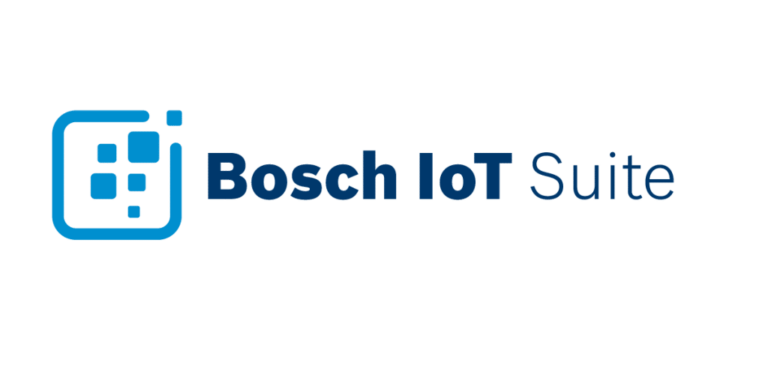
Bosch IoT Suite is a collection of applications and services that help cover all the requirements of IoT management across the device(s) lifecycle. From IoT device management to data management and IoT edge, it helps you with all.
Specification | Description |
|---|---|
| Official Website | https://bosch-iot-suite.com/ |
| Supported Device Systems | Supports any operating system equipped with Java SE VM, such as Linux, Windows, and Solaris. |
| Key Features | ● Allows the management and control of IoT devices ● Enable your IoT devices for AIoT ● Includes a common certificate management module ● Access and control devices remotely through HTTP, secure communication, and JSON-RPC tunnels ● Maintain devices using the device logs, alerts, remote file transfer, and backup capabilities. |
| Open-source? | No, it's not an open-source platform. |
| Pricing | The project cost can vary based on the desired requirements. Therefore, Bosch allows you to calculate an estimated price using their pricing calculator. |
| G2 Score | 4.3/5.0 based on 10 reviews. |
ThingWorx

ThingWorx is a popular IoT platform by PTC that makes the building and running of IoT applications easier than ever. It is an enterprise-ready technology that equips developers with the capabilities to create scalable and secure solutions.
Specification | Description |
|---|---|
| Official Website | https://www.ptc.com/en/products/thingworx |
| Supported Device Systems | ● Windows ● iOS ● Android |
| Key Features | ● Provides the building blocks of applications, connectors, domain models, business logic, and UI elements to help kickstart your IoT ecosystem ● Build the IIoT (Industrial Internet of Things) solution with ease ● Access real-time insights and predictions of IoT industrial data ● Effectively manage the connected devices and their processes ● Connect systems and devices across distinctive network topologies |
| Open-source? | No, it is not an open-source platform. |
| Pricing | There is no pricing model defined by the company. However, they operate on the subscription model and you can access the details or product packages here. |
| G2 Score | 3.7/5.0 based on 27 reviews. |
Part 3: Common Use Cases for Remote IoT Device Management Platforms
Following are some of the common use cases for which remote IoT device management platforms stand as a suitable choice:
Device Management
With remote IoT platforms, it is easier to register and control all the IoT devices of an ecosystem from one central point.
Software Update
Having all the devices controlled from one point, you can send software uploads and updates across devices in a few clicks.
Troubleshooting
When the devices are connected and their status is updated on the admin console, it's easier to keep track of any abnormal behaviours and take corrective measures in time.
Security
With remote IoT solutions, measures like encryption and credential protection can be imposed that add a layer of security across the whole ecosystem.
Data Collection and Analysis
Remote IoT platforms, especially the data analytics platforms make it easier to collect data from the devices and analyze it to identify the improvement areas.
Part 4: Key Factors to Consider When Choose the Best Remote IoT Device Management Platform
When choosing the right remote IoT device management platform, the following are some of the key factors to keep in consideration:
Functional Requirements
Not all remote IoT platforms can be a suitable choice for you. Therefore, it's important to list down all the functional requirements and then choose the platform that aligns with, if not all, most of them.
Budget
Remote IoT platforms can be costly in terms of the increased number of devices. In such cases, define your budget constraints and go for the suitable option that fulfills major requirements within the defined range.
User Friendliness
Because of the extensive functionalities handled by IoT platforms, some of them can have a complicated user interface. Therefore, if the users of the platform are not that technically sound, it’s a good approach to choose platforms with user-friendly interfaces.
Security Requirements
Security is a non-negotiable element in the IoT ecosystem. Almost all the remote IoT platforms offer basic security measures, but it's always a wise choice to explore the security of a platform in detail, before registering devices on it.
Device Types
Different platforms come with the support of different device types and operating systems. One must gauge the ability of the platform to support and manage the organization’s device types.
Part 5: How to Use AirDroid Business for Remote IoT Device Management?
This section covers the methods of utilizing the capabilities of AirDroid Business for remote IoT management. It’s a seven-step process outlined below:
1Device Enrollment and Configuration
Establish the connections between the IoT devices and platforms by registering the devices. Using AirDroid, you can enroll devices via four methods:
- Device Owner Enrollment
- Zero-Touch Enrollment
- Android Enterprise Enrollment
- Regular Enrollment
After enrollment, configure them for smooth communication across the nodes.
2Device Monitoring
Once the devices are enrolled and configured, they are ready to enter the monitoring stage. You can remotely monitor the IoT devices for their status and performance using the feature templates provided by AirDroid. These include:
- Screenshot
- Camera
- Device Map
- Details
- Screenshot & Camera
- General Indicators
- Biz Daemon Status
- Device Network
3Remote control
Remotely access and control all the connected IoT devices via the admin console. All the connected devices are displayed there, and you can execute the required commands to manage the device state and data accordingly.
4App upload and updates
Using the AirDroid Application Management System (AMS), upload/update the company-owned and Managed Google Play Store applications on the devices. AirDroid makes it easier to bulk upload and update the applications across all the connected IoT nodes in the ecosystem.
5Security Management
AirDroid equips you with a distinctive set of security solutions to secure your devices and network. You can enable the storage encryption and credential setting policy. Additionally, you can set up custom compliance settings for the devices to prioritize the compliance rules set by you over other configurations.
6Alert and notification
Set up alerts and notifications to stay updated about any such scenario where equipment is not performing the desired behaviour. AirDroid Business offers more than 13 triggers that can be customized for the alerts. Enable a workflow to automate the sending of alerts and notifications for all the required scenarios.
7Data Reports
Collect all the data of IoT devices in the ecosystem and generate reports. The reports bring all the insights in one place, which can help define the corrective actions for the enhanced performance of the devices.
AirDroid Business - Android Device Management
AirDroid Business is an Android device management solution that can be used to enroll, manage, and monitor large fleet devices. With the centralized platform, organizations are able to deploy smartphones, tablets, rugged devices and others dedicated devices like kiosks and digital signage.
It's available for Cloud Deployment & On-Premises Deployment.
Key features include: remote access & control, Google Play apps & enterprise's apps management, policy, single & multi-apps kiosk mode, alerts & automated workflows, geofencing & location tracking, file transfer, notification, user management, reports, etc.
Bringing it all together, remote IoT device management platforms stand as an effective choice to manage IoT devices across the ecosystem. They help provide all the necessary functionalities to manage, control, and secure the devices. Therefore, choose the optimal remote IoT device management platform to help instill efficiency and effectiveness in your processes.






Leave a Reply.